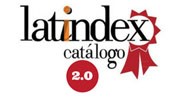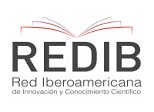The Didactics of the Literacy Process of English to Refugee Children in Esmeraldas
DOI:
https://doi.org/10.69890/hallazgos21.v3i0.248Keywords:
didactics; literacy; english; refugee children; teaching methods.Abstract
To analyze the didactics of the Literacy process of English to refugee children in Esmeraldas, a qualitative investigation was carried out with the analytical-synthetical and dialectic-hermeneutic methods, and the techniques of observation and interview, applied to a sample of six children who participated in the English lessons, as part of the Programme of Connection with the Community “Socio Economic Protection: Reduction of Sexual Gender Based Violence (SGBV) and Promotion of Sustainable Means of Life”, developed by the Pontifical Catholic University of Ecuador in Esmeraldas. The results revealed that the teachers prioritize the Ludic Methodology, with the presentation of videos, the use of pictures, drawings, plays, combined with the Grammar-Translation, the Audio-Lingual and the Total Physical Response methods. The techniques used were questions and answers, dialogue memorization, pattern repetition, substitution drills, among others. The contents were organized at the beginner and basic-elementary levels, taking into consideration that it was a multilevel class and some students had just begun to study English, whereas others had started learning this language at school. The students increased their level of participation and learned basic communicative functions and vocabulary. It was concluded that the Ludic Methodology is necessary in the Literacy process of English to refugee children, combined with other methods to activate learning.
References
ACNUR. Comité Español (s.f). La Educación de los Niños Refugiados: Una Ventana al Futuro. Recuperado de http://recursos.eacnur.org/hubfs/Content/ACN_ebook_educacion_refugiados.pdf?t=1462372643603
Álvarez Alvear, R. (2009). La Importancia del Programa Bilingüe Early Transition en el Nivel de Kindergarten para el Desarrollo del Aprendizaje de Dos Alumnos Mexicanos Migrantes en los Estados Unidos de Norteamérica-Edición Única. Tesis para optar por el título de Maestro en Educación. Tecnológico de Monterrey. Universidad Virtual. Recuperado de https://repositorio.itesm.mx/ortec/bitstream/11285/569618/1/DocsTec_10403.pdf
Andrade, C. (2017). “The use of songs in the English Language Teaching-Learning Process of the 6th Level Basic Education Students at “Francés” Private Educational Institution in Esmeraldas”. International Congress on the Didactics of the English Language Journal, Vol.2, No.1. Recuperado de http://revistas.pucese.edu.ec/ICDEL/index
Bryzzheva, L. (2002). “From Vygotsky to Bakhtin”, en L. D. Soto (Ed), Making a difference in the lives of bilingual/bicultural children. (pp. 25 – 30). New York, EE. UU.: Peter Lang Publishing, Inc. Calderón, N. (s/f).
Castaño, C. (2010). La Lúdica como Recurso para la Enseñanza del Inglés en el Grado Primero. Tesis en opción al título de Licenciado en Pedagogía Infantil. Universidad de la Amazonía. Recuperado de https://edudistancia2001.wikispaces.com/file/view/25.+LA+L%C3%9ADICA+COMO+RECURSO+PARA+LA+ENSE%C3%91ANZA+DEL+INGL%C3%89S+EN+EL+GRADO+PRIMERO.pdf
Estupiñán, E. (2015). Teaching English with the Ludic Methodology to Children in the Second Basic Grade at "Velasco Ibarra School" in Esmeraldas city, Ecuador. Tesis en opción al título de Licenciado en Lingüística Aplicada Mención Enseñanza del inglés. Pontificia Universidad Católica del Ecuador Sede Esmeraldas. Recuperado de https://repositorio.pucese.edu.ec/handle/123456789/382
Hakuta, K., Goto, Y., y Witt, D. (2000). How long does it take English learners to attain proficiency? The University of California Linguistic Minority Research Institute. Recuperado de https://scholar.google.com/scholar_lookup?hl=es&publication_year=2000&author=K.+Hakuta&author=Y.+Goto+Butler&author=D.+Witt&title=How+long+does+it+take+English+learners+to+attain+proficiency%3F
Ivic, I. (1994). Lev S. Vygotsky. [Versión electrónica], Prospects: the quarterly review of comparative education, vol. XXIV, no. 3/4, 1994, p. 471–485. Recuperado de http://www.ibe.unesco.org/publications/ThinkersPdf/vygotske.pdf
Ormrod, J. E. (2005). Aprendizaje humano. Madrid: Pearson Educación, S. A. Pérez, G.
Ramírez, H., Perlaza, M., Escobar, J., & López, B. (2017). Teaching English to Refugees in a Multilevel Classroom. International Congress on the Didactics of the English Language Journal, Vol. 2, No.1. Recuperado de http://revistas.pucese.edu.ec/ICDEL/index
Rodríguez, M. (2011). La teoría del aprendizaje significativo: una revisión aplicable a la escuela actual. IN. Revista Electrònica d’Investigació i Innovació Educativa i Socioeducativa, V. 3, n. 1, PAGINES 29-50. Recuperado de https://dialnet.unirioja.es/servlet/articulo?codigo=3634413
Scott, W. e Ytreberg, L. (s.f). Teaching English to Children. Longman. Recuperado de http://www.cje.ids.czest.pl/biblioteka/6940128-Teaching-English-To-Children.pdf
Vygotsky, Lev s. (1979). El desarrollo de los procesos psíquicos superiores. Edit. Crítica, Barcelona.
Downloads
Published
How to Cite
Issue
Section
License
Los artículos enviados a la Revista Científica Hallazgos21 deberán ser totalmente originales e inéditos.
Los autores son los responsables de los textos y las imágenes incluidas en los artículos y no necesariamente reflejan el pensamiento de la editorial o de la Pontificia Universidad Católica del Ecuador, Sede Esmeraldas (PUCESE).
Los autores disponen cederle a la Revista Científica Hallazgos21 todos los derechos inherentes para la edición, publicación y distribución o divulgación del mismo.
Se autoriza a las revistas firmantes de los acuerdos de Encuentros de Revistas Latinoamericanas para reproducir en parte o totalmente los artículos con la sola mención de la fuente claramente señalada.







